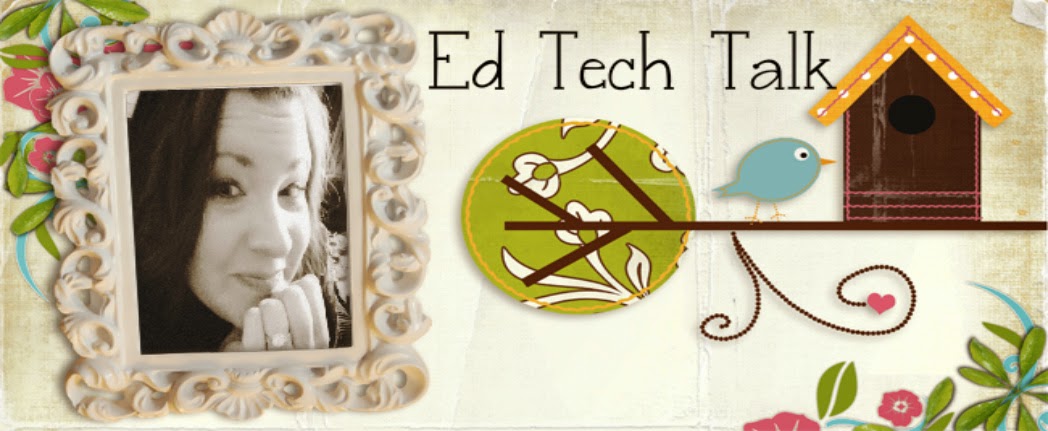Group Reflection- Week 5
As a group we planned and unit for 3rd
grade Social Studies. Our UDL centered
around citizenship traits and how students can give back to their communities
through non-profit organizations. Below
you will find more detailed information about the activities we chose, why we
chose them and professional development for staff.
The Rationale for Technology Activities and Samples as a Solution
for the Scenario
The given scenario involved a classroom of students who were all
at different instructional levels, as well as, students with special needs and
individual education plans. Coming up with differentiated lesson plans,
and related technology activities that meet the specific needs of the students
can be challenging, but a necessary process for teaching 21st century learners.
Technology affects how students live and communicate and when, where, and
how they learn. Having digital technology at their fingertips all the
time means that students think, work, and play differently from previous
generations (Solomon, 2007). Our team decided to focus our unit on 3rd grade social studies TEKS that
concentrated on citizenship, and the historical figures who portrayed positive
citizenship traits. Our three UDL lessons (“Good Citizenship”,
“Non-Profit Organization”, and “Am American Hero: Helen Keller”) were filled
with higher level learning opportunities, differentiated technology activities,
appropriate modifications for the special needs student and gifted
learners, while also embedding the affective, strategic, and recognition
networks. We wanted to create UDL lessons that were engaging for the
students, as well as, differentiated and modified to meet the specific learning
needs of the students in our scenario.
Project-based learning allows for alternative approaches that
address students’ individual differences, variations in learning styles,
intelligences, and abilities and disabilities (Solomon, 2007). The web
based tools and activities that we created gave the students the ability to
communicate and collaborate in a new and exciting way. Our team chose to
create nine different technology activities that all engaged the learners, and
allowed for them to take ownership of their own learning. Some examples
of these activities were webquest challenges, creating eBooks, an 8 box picture
game, creating digital presentations, class blogging, and utilizing online
graphic organizers. As mentioned earlier, all of these activities were
designed around the TEKS, IEPs, and were differentiated and modified for all
learners in the scenario. The students in our scenario would have been
successful in the classroom as a result of our differentiated UDL lessons and
technology activities.
The Rationale for Recommended Professional Development for
Teachers
In workplaces, professional development refers to the attainment
of skills and knowledge both for personal development and for career
advancement. Professional development incorporates all types of facilitated
learning opportunities. There are a variety of approaches to professional
development, including consultation, coaching, and communities of practice,
lesson study, mentoring, reflective supervision, and technical assistance. In
“Teaching with Technology” our group feel that we have a moral obligation to
our colleagues and other educators to pass on the various technologies we
encounter daily and in this course. In Using Technology with Classroom
Instruction that Works, it talks about Planning for Technology. “Using
technology for technology’s sake isn’t a good application of instructional time
or funding, and it is unlikely to improve student achievement. It is essential
that teachers design a quality lesson plan first and then select the most
appropriate technologies to support that lesson (p. 217).” But how can our
teachers and colleagues plan and present what they haven’t learned themselves?
Professional development is the key to incorporating technology
into the classroom. To successfully and continuously integrate technology in
the classroom, teachers have to be comfortable with the technology used.
Therefore, professional development, ongoing support, training and mentoring to
aid our teachers in becoming familiar with technology and embracing the
effectiveness it brings to the classroom, is a necessity. Being able to share
the UDL and creating an eBook, amongst other technologies; blogs, google sites,
PowerPoint presentations and various learning websites, was very enlightening.
In sharing this information with one teacher, she embraced it well. She said
she had just come from her first ever “teaching with technology” conference.
She knew about technologies that could be used to correspond with teachings in
the class, but never really knew how to get started or incorporate them into
her lessons. She was truly excited about increasing her professional
development and bringing what she learned to the classroom. Our group has
learned that with ongoing professional development and if applied effectively,
technology implementation not only increases student learning, understanding,
and achievement but also augments motivation to learn, encourages collaborative
learning, and supports the development of critical thinking and problem-solving
skills (Schacter & Fagnano, 1999). It’s a Win-Win!
Team Collaboration
As a team we worked very
well together. Each of us brought a
different set of skills to the table and we found a way to utilize each of them
to the maximum. For this reflection,
Hannah wrote the section over activities, Wendy wrote about professional
development and Nikki formatted and tied everything together into one
paper. Additional documentation of
collaboration can be found on the Google Drive at: https://drive.google.com/folderview?id=0B3MgUP6y0zg1Rk5KdVczV3J0OGM&usp=sharing
References
Pitler, H., Hubbell, E., Kuhn, M., & Malenoski, K. (2007). Using
technology with classroom instruction that works. Alexandria, VA:
Association for Supervision and Curriculum Development, Introduction, 1 – 14,
Chapters 1, 15-38.
Rose,
D., & Meyer, A. (2002). Teaching every student in the digital age:
Universal design for learning. Alexandria, VA: Association for Supervision and
Curriculum Development. Chapter 7. Available online at the Center for Applied
Special Technology Web site. Retrieved from
http://www.cast.org/teachingeverystudent/ideas/tes/
Solomon, G., & Schrum, L. (2007). Web 2.0: New tools, new
schools. Eugene, OR: International Society for Technology in Education






